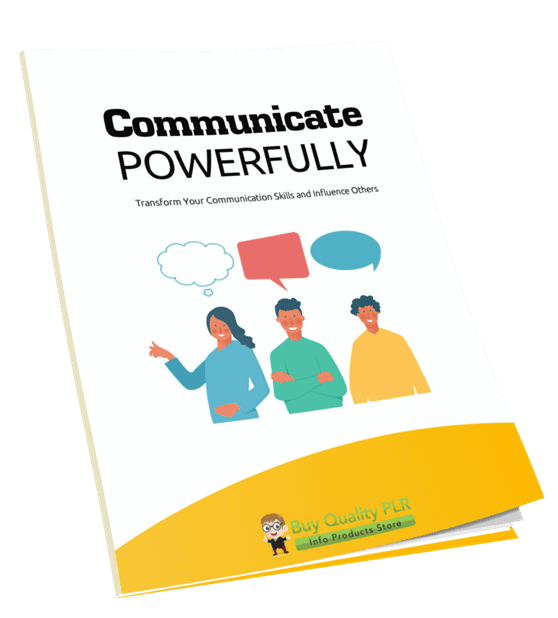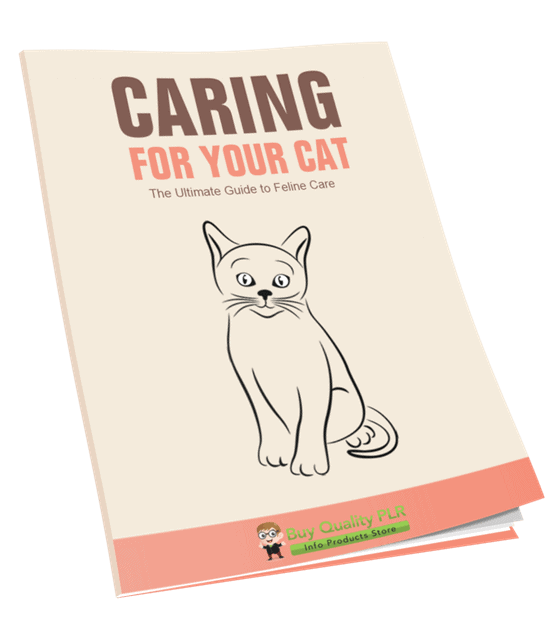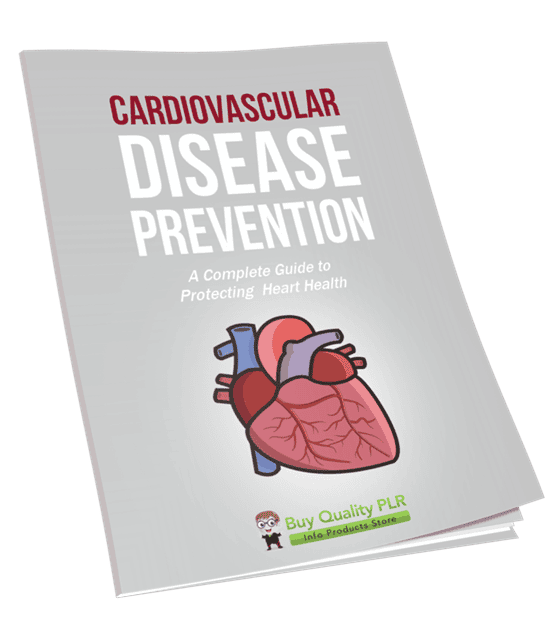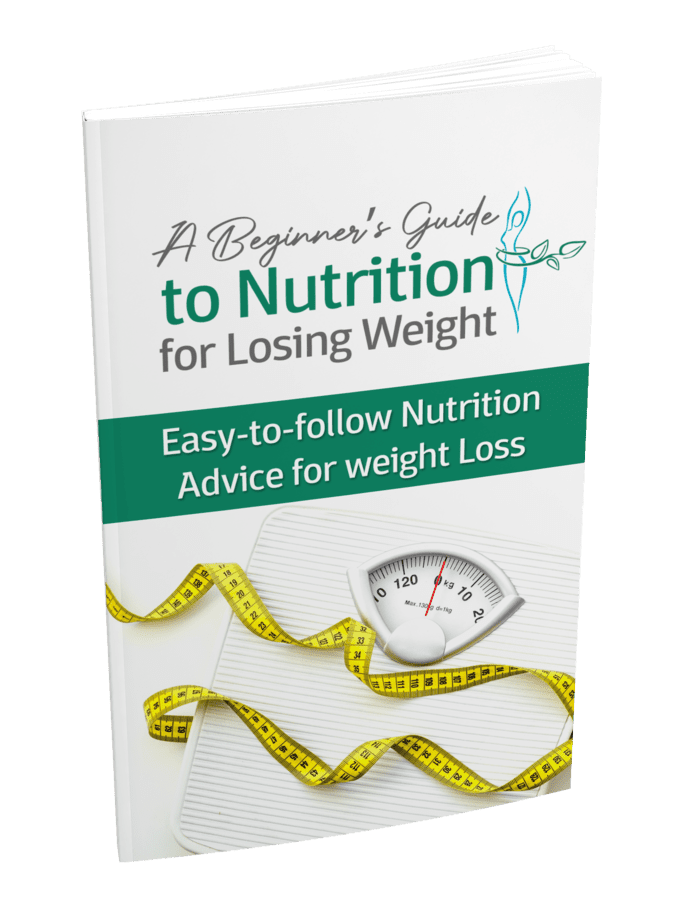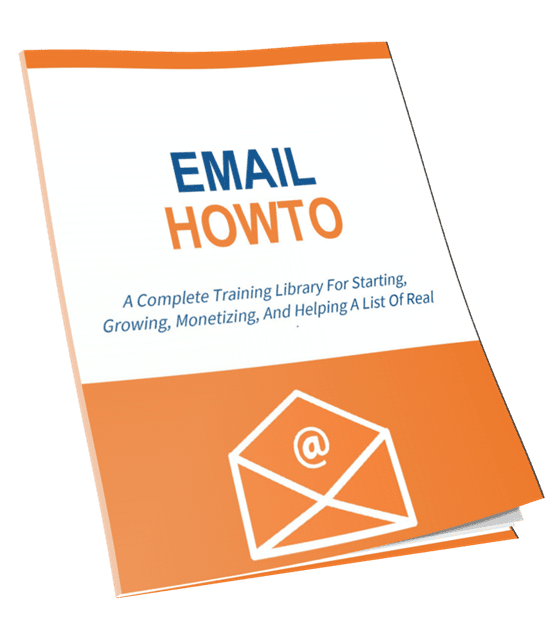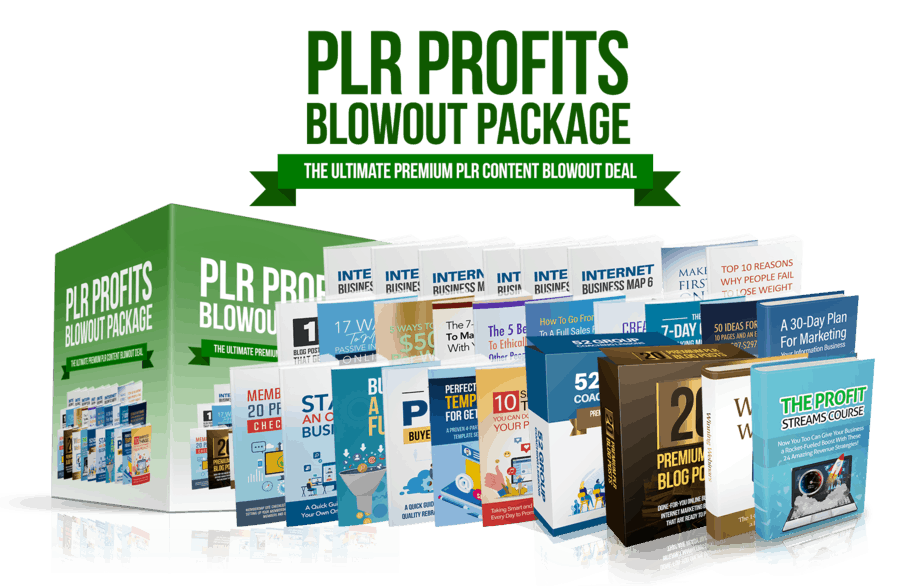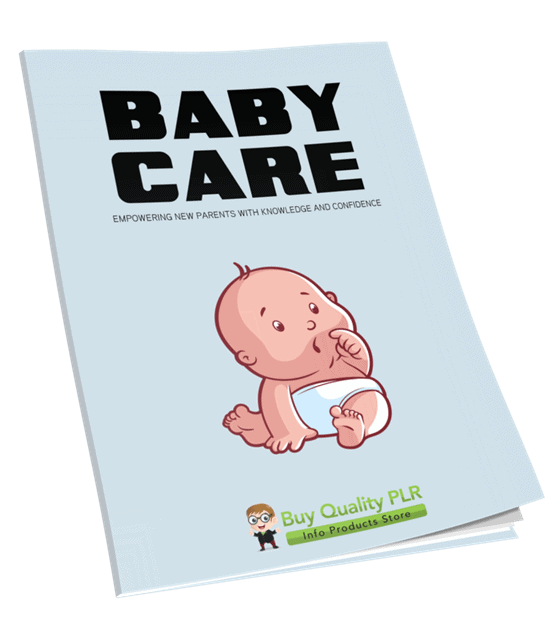
Baby Care PLR Course 29k Words
in Parenting , Parenting PLR , Parenting PLR Ebooks , PLR Checklists , PLR eBooks , PLR eCourses , Premium PLR , Premium PLR eBooks , Premium PLR Reports , Premium White Label Brandable PLR Coaching Courses , Private Label Rights ProductsChoose Your Desired Option(s)
has been added to your cart!
have been added to your cart!
#babycareplr #parentingplr #newborncare #babytips #plrcourse #digitalproducts #momlife #parentingguide #plrcontent
Baby Care PLR Course – A Comprehensive Guide for New Parents
Welcome to the Ultimate Guide to Baby Care: Empowering New Parents with Knowledge and Confidence
Becoming a parent is one of the most rewarding experiences of life, but it comes with challenges and new responsibilities. The Baby Care PLR Course is your step-by-step guide to understanding, nurturing, and caring for your little one during those crucial first years. With 27,363 words of comprehensive content, you will have everything you need to confidently manage your baby’s needs, from feeding and sleep to health and development.
This expertly crafted course covers 5 key modules, each providing actionable insights and advice, perfect for new parents who want to give their babies the best start in life.
Presenting…
Baby Care PLR Course 29k Words
Course Overview
This course is designed to give you a holistic approach to baby care, covering the essential topics that new parents need to understand. With a mix of practical tools, emotional support strategies, and expert guidance, this course will empower you to confidently navigate the beautiful journey of parenthood.
What’s Included in the “Baby Care: A Comprehensive Guide for New Parents” Course?
Module 1: Understanding Your Baby’s Needs
- Step 1: Building the Connection
Learn how to identify your baby’s cues and understand their needs for hunger, comfort, and sleep. - Step 2: Creating a Safe Environment
Tips on babyproofing your home and ensuring a secure space for your baby to explore and grow safely. - Step 3: Essentials for Newborn Care
A checklist of must-have items for newborn care, from diapers to baby clothes. - Step 4: Embracing the Fourth Trimester
Understanding the crucial period of adjustment for your baby and providing the comfort they need.
Module 2: Feeding Your Baby
- Step 1: Breastfeeding Basics
Learn how to create a successful breastfeeding routine, overcome challenges, and bond with your baby. - Step 2: Formula Feeding Made Simple
Understanding formula options, preparation, and safe storage for effective feeding. - Step 3: Understanding Feeding Schedules
Create a flexible feeding schedule that works for both you and your baby. - Step 4: Recognizing Hunger and Fullness Cues
Learn how to decode your baby’s signals for hunger and fullness to ensure proper feeding.
Module 3: Healthy Sleep Habits
- Step 1: Setting Up a Sleep-Friendly Space
Tips for creating a soothing environment that promotes better sleep for both you and your baby. - Step 2: Developing a Bedtime Routine
Establish a calming and consistent bedtime routine to encourage restful sleep. - Step 3: Understanding Baby Sleep Patterns
Get insights into sleep cycles, naps, and the stages of baby sleep to help you understand your baby’s rhythm. - Step 4: Handling Sleep Regression
Learn how to manage sleep disruptions during growth spurts and other developmental stages.
Module 4: Caring for Your Baby’s Health and Hygiene
- Step 1: Bath Time Basics
Safe and enjoyable steps for giving your baby a bath and promoting relaxation. - Step 2: Diaper Changing 101
Tips on proper diaper changing techniques and how to prevent rashes. - Step 3: Recognizing Common Illnesses
How to spot colds, fevers, and other common baby ailments, and how to handle them effectively. - Step 4: Visiting the Pediatrician
Get the most out of your pediatrician visits by learning what to ask and what to expect.
Module 5: Supporting Development and Bonding
- Step 1: Encouraging Milestones
Fun activities and tips to support your baby’s motor skills, language development, and social growth. - Step 2: The Power of Play
Discover the role of playtime in your baby’s development and learn about age-appropriate toys. - Step 3: Nurturing Emotional Well-Being
Creating a loving and responsive environment to foster emotional growth in your baby. - Step 4: Self-Care for Parents
Tips for maintaining your own well-being while caring for your baby, because your health matters too!
Bonuses Included in Your Purchase
- Baby Care Checklist (433 words)
A quick and easy-to-follow checklist for new parents, ensuring no essential aspect of baby care is missed. - Baby Care FAQs (1161 words)
A comprehensive FAQ section answering the most common questions new parents have about baby care. - Sales Page for Baby Care Course (853 words)
A professionally written sales page to help you sell this course quickly and effectively.
How to Use and Profit from the Baby Care Course
This Baby Care PLR Course is a versatile tool that can help you generate income in several ways. Here are some ideas:
- Sell the Course As-Is
You can sell this course directly to new parents as-is, or with minor tweaks, for $14.99 or more. - Create Mini-Courses or Reports
Break the course into smaller modules or reports and sell them individually for $10-$20 each. - Bundle the Course
Combine this course with other parenting or health-related content to create a higher-value package for $47-$97. - Membership Site
Set up a membership site where subscribers can access the course content, along with exclusive resources, for a monthly fee. - Offer One-on-One or Group Coaching
Use the course content as the foundation for coaching new parents, and offer personalized support for $297-$497. - Convert to Audio/Video
Turn the course content into podcasts or video tutorials, and sell them as premium products. - Lead Magnets
Excerpt parts of the course to offer free as lead magnets to attract potential customers for your paid offerings.
License Terms: What You Can and Can’t Do
What You Can Do:
- Sell the course as-is or rebrand it to suit your audience.
- Break the course into smaller portions and sell them for $10-$20 each.
- Bundle the course with other related content and sell it for $47-$97.
- Create membership sites, coaching programs, or e-classes.
- Use the content to create audio, video, or physical products.
- Excerpt portions of the course to use as blog posts, reports, and lead magnets.
What You Can’t Do:
- You cannot pass on PLR rights or reprint rights to your customers.
- The content must be sold and cannot be given away for free in its original form.
- You cannot offer 100% commission to affiliates (maximum 75% commission).
Get Started Now – Only $14.99!
Ready to provide invaluable guidance to new parents while building your business? The Baby Care PLR Course is your ultimate resource to help parents navigate the first year of their baby’s life with confidence. This course is ready-to-sell and provides everything you need to build your brand or start your business today.
Empower New Parents and Grow Your Business
Don’t miss out on this opportunity to make a difference in the lives of new parents. With the Baby Care PLR Course, you’re not only offering valuable content but also a trusted resource for parents navigating one of the most rewarding journeys of their lives. Get started now!
has been added to your cart!
have been added to your cart!
Here A Sample of Baby Care PLR Course
Module 1: Understanding Your Baby’s Needs
Step 1: Building the Connection
Learn How to Understand Your Baby’s Cues for Hunger, Sleep, or Comfort
Introduction
Every baby has a unique way of communicating their needs. Understanding these signals builds a strong foundation of trust and connection between you and your baby. This step will guide you through the process of observing, interpreting, and responding to your baby’s cues with confidence and care.
Step-by-Step Instructions
1. Observing Your Baby’s Behavior
To connect with your baby, start by closely observing their actions, expressions, and sounds.
- Look for patterns: Pay attention to the times of day or specific situations when your baby shows certain behaviors.
- Notice body language: Babies often use subtle gestures, such as rubbing their eyes when tired or rooting (turning their head with their mouth open) when hungry.
- Listen to cries: Different types of crying can indicate hunger, discomfort, or the need for attention. Observe the tone, intensity, and duration of the cry.
Tip: Keep a journal for a few days to note what your baby does and how you respond. Over time, you’ll recognize recurring patterns.
2. Understanding Hunger Cues
Babies show early, active, and late hunger signs. Responding early helps avoid frustration for both you and your baby.
- Early hunger cues: Rooting, sucking on their hands or fingers, smacking lips.
- Active hunger cues: Squirming, fidgeting, and turning their head side to side.
- Late hunger cues: Crying is typically the last stage. At this point, calming your baby first before feeding can make the process smoother.
Action: When you notice early hunger cues, offer the breast, bottle, or other appropriate feeding methods calmly and promptly.
3. Recognizing Sleep Cues
Understanding when your baby is ready for sleep helps them settle faster and avoid becoming overtired.
- Common sleep cues: Yawning, rubbing eyes, staring into the distance, or pulling on ears.
- Behavioral signs: Babies may get fussy, clingy, or overly active when they’re struggling to fall asleep.
- Timing matters: Newborns typically need to sleep after 1-2 hours of wakefulness.
Action: When you notice these signs, create a calm, sleep-friendly environment. Dim the lights, reduce noise, and begin a soothing bedtime routine, such as singing or gentle rocking.
4. Comfort Cues and Calming Techniques
Babies often seek comfort when they feel overwhelmed, overstimulated, or simply need reassurance.
- Signs your baby needs comfort: Fussing, arching their back, clenching fists, or stiffening their body.
- Check for discomfort: Ensure your baby isn’t too hot or cold, has a clean diaper, and isn’t experiencing any irritation.
- Offer soothing: Use gentle techniques like skin-to-skin contact, swaddling (for newborns), or rhythmic movements like rocking or patting.
Action: Hold your baby close, speak in a calm, soothing tone, or try white noise to mimic the womb environment. Experiment to find what works best for your baby.
Practical Exercise for Parents
- Set aside 10 minutes daily to observe your baby in a calm setting. Focus on their movements, sounds, and expressions without distraction.
- Practice responding to their cues immediately: Offer food when they show early hunger signs, initiate a nap at the first sign of sleepiness, or comfort them with touch when they seem uneasy.
Key Takeaways
- Babies communicate through cues before crying. Responding to these cues builds trust and reduces stress.
- Every baby is different. Observing and responding consistently helps you understand your baby’s unique communication style.
- Building this connection early fosters a sense of security, emotional well-being, and bonding between you and your child.
With patience, attentiveness, and practice, you’ll become attuned to your baby’s needs, creating a nurturing and loving relationship.
Step 2: Creating a Safe Environment
Explore Tips to Babyproof Your Home and Ensure a Secure Space for Your Little One
Introduction
Creating a safe and secure environment is one of the most important aspects of caring for your baby. Babies are naturally curious, and as they grow and explore their surroundings, it’s essential to anticipate potential hazards and take proactive steps to prevent accidents. This step will guide you through the process of babyproofing your home, covering key areas of concern and offering practical solutions to ensure your baby’s safety.
Step-by-Step Instructions
1. Babyproofing the Nursery
The nursery is the primary space where your baby will sleep, play, and spend a significant amount of time. Ensuring it’s safe is a top priority.
- Crib safety: Ensure that the crib meets international safety standards. The mattress should fit snugly without any gaps, and the crib slats should be no more than 6 cm apart. Avoid placing soft bedding, pillows, or stuffed animals in the crib, as they can pose a suffocation hazard.
- Changing table safety: Always keep one hand on your baby when using the changing table. Use a safety strap to prevent rolling, and store essential items within arm’s reach to avoid leaving your baby unattended.
- Secure furniture: Anchor any heavy furniture, such as bookshelves or dressers, to the wall to prevent tipping if your baby starts to pull themselves up.
Action: Invest in a high-quality crib that adheres to safety standards and avoid items that could pose suffocation risks.
2. Babyproofing the Living and Play Areas
As your baby begins to crawl, stand, and eventually walk, their environment will need to be adjusted for safety.
- Cover sharp corners: Use corner protectors or foam padding on tables, counters, and any other furniture with sharp edges.
- Secure heavy furniture: Anchor heavy furniture like televisions, bookshelves, and cabinets to the wall, especially if it’s in an area where your baby is likely to pull up.
- Tidy up cords and wires: Keep electrical cords, extension cords, and cables out of reach by using cord management systems or hiding them behind furniture. Consider using safety covers on electrical outlets to prevent any risk of shock.
- Use baby gates: Install gates at the top and bottom of staircases, as well as in doorways to limit access to rooms that may pose safety risks, like kitchens or bathrooms.
Action: Assess your living areas and make adjustments, such as padding sharp corners, hiding cords, and securing furniture, to create a safer environment for your baby’s exploration.
3. Kitchen and Bathroom Safety
The kitchen and bathroom are two of the most dangerous rooms in the house, filled with sharp objects, cleaning supplies, and hot surfaces.
- Cabinet locks: Install childproof locks on kitchen cabinets and drawers to keep your baby away from dangerous items like knives, cleaning products, and medications.
- Stove and oven safety: Keep pot handles turned inward to prevent your baby from grabbing them. Use stove guards to prevent access to the stovetop and oven.
- Sink and toilet safety: Use lockable covers on toilets to prevent your baby from falling in, and store cleaning products in high, secured cabinets.
- Water temperature: Set the water heater temperature to a maximum of 49°C (120°F) to prevent burns. Always check the water temperature with your wrist or elbow before bathing your baby.
Action: Install childproof locks on cabinets and drawers, set safe water temperatures, and implement stove and oven safety measures to make these rooms safer for your baby.
4. Outdoor and General Household Safety
Ensuring the safety of your home extends beyond the walls of the nursery and living areas.
- Outdoor safety: If you have a garden or balcony, ensure that any fencing or barriers are secure. Keep tools, plants, or chemicals out of your baby’s reach. If your baby will be playing outdoors, ensure the area is free from sharp objects, stones, or other hazards.
- Flooring safety: As your baby starts to crawl and walk, it’s essential to maintain safe flooring. Install soft rugs or padded mats in play areas to cushion falls.
- Toys and objects: Choose age-appropriate toys that don’t have small parts that could pose a choking hazard. Regularly inspect toys to ensure they’re free from breakage or sharp edges.
- Smoke and carbon monoxide detectors: Check that smoke alarms and carbon monoxide detectors are in place and functioning properly. These should be installed on every floor of the home, especially near bedrooms.
Action: Create a safe outdoor environment, use soft mats or rugs indoors, and regularly check toys and safety alarms to ensure your home remains secure for your baby.
Practical Exercise for Parents
- Walk through your home: Take a slow, deliberate walk through your home, getting down to your baby’s eye level to look for potential hazards you might have missed from a standing perspective.
- Create a babyproofing checklist: Use the tips from this section to create a personalized checklist for each room of your home. Review this list regularly as your baby grows and their needs change.
Key Takeaways
- Babyproofing is a continuous process. As your baby grows and develops new skills, revisit your home environment to ensure it remains safe and secure.
- Anticipating potential hazards before they occur can significantly reduce the risk of injury or accidents.
- Safety measures such as securing furniture, managing cords, and monitoring water temperature may seem small but are crucial in creating a safe environment for your baby.
By following these steps and remaining vigilant, you can create a safe and nurturing space for your baby, where they can explore and grow without unnecessary risks.
Step 3: Essentials for Newborn Care
Get a Checklist of Must-Have Items Like Diapers, Wipes, and Baby Clothes
Introduction
When you welcome a newborn into your life, one of the first things you will need to focus on is ensuring you have all the essential items to care for your baby. These must-have essentials are not only about comfort but also about the health and well-being of your newborn. This step will guide you through creating a comprehensive checklist of the necessary items, covering everything from hygiene products to baby clothes and sleepwear.
By having the right tools and supplies on hand, you will be able to confidently handle your newborn’s basic needs and create a welcoming, safe environment for them.
Step-by-Step Instructions
1. Diapers and Changing Essentials
Diapers are one of the most essential items for newborn care. Babies need to be changed frequently, especially in the early weeks.
- Disposable vs. Cloth Diapers: Decide between disposable diapers and cloth diapers based on your lifestyle and preference. Disposable diapers are convenient but may cause more waste. Cloth diapers are environmentally friendly but require washing and maintenance.
- Diaper size: Newborns generally wear size “Newborn” or “0-3 months” diapers. However, consider purchasing a few larger sizes as well, as some babies grow quickly.
- Wipes: Choose baby wipes that are hypoallergenic, fragrance-free, and suitable for sensitive skin. You may also want to use water-based wipes for the first few weeks.
- Diaper rash cream: Diaper rash is common in newborns. Having a gentle diaper rash cream or ointment is essential to protect your baby’s delicate skin.
- Changing Pad or Station: Set up a comfortable, safe place for diaper changes. A changing table or a padded changing mat will make the process easier. Consider having a small caddy nearby with extra diapers, wipes, and creams.
Action: Purchase a sufficient supply of diapers, wipes, and diaper rash creams. Set up a convenient changing station in a safe and accessible area.
2. Baby Clothes and Bedding
Your newborn will need several changes of clothing every day. It’s important to focus on comfort, breathability, and ease of dressing when selecting clothes for your baby.
- Onesies and Bodysuits: Soft cotton onesies or bodysuits are comfortable for your baby and easy to put on and take off. Make sure to choose sizes that suit your baby’s weight, as newborns often grow quickly.
- Sleepwear: Choose sleepwear like sleep sacks or zip-up footed pajamas to keep your baby warm and cozy. Avoid blankets in the crib to reduce the risk of suffocation.
- Socks and Mittens: Your newborn’s hands and feet will need protection, especially when they are born. Choose soft socks and mittens to help keep them warm and prevent them from scratching themselves.
- Hats: Depending on the weather, a soft, breathable hat is important for regulating your newborn’s body temperature.
- Swaddle Blankets: Swaddling provides comfort and security for many newborns, so having a few soft swaddle blankets is helpful, especially in the first few months.
Action: Make sure you have enough clothes for your baby for at least 7–10 days, including onesies, sleepwear, mittens, socks, and hats. Opt for simple, comfortable fabrics and easy-to-use fastenings like zippers or snap buttons.
3. Feeding Supplies
Whether you plan to breastfeed or bottle-feed, ensuring you have all the necessary feeding supplies is key.
- Breastfeeding essentials: If you plan to breastfeed, consider a breastfeeding pillow for support, nipple cream for soothing, and a nursing cover if you prefer privacy.
- Bottles and Nipples: If bottle-feeding, stock up on baby bottles that are easy to clean and durable. Choose nipples that are appropriate for your baby’s age and feeding stage (slow flow for newborns).
- Formula (if applicable): If you are not breastfeeding, choose a newborn-safe formula. Consult with your pediatrician to find the best option for your baby’s needs.
- Bottle Sterilizer: A bottle sterilizer ensures that all feeding bottles, nipples, and other items are sanitized and free of germs. You can either use an electric sterilizer or sterilize bottles manually by boiling them.
- Burp Cloths and Bibs: Babies often spit up after feedings, so it’s essential to have soft burp cloths and bibs to protect their clothes and keep them comfortable.
Action: Ensure you have enough feeding supplies based on your choice of breastfeeding or bottle-feeding. This includes bottles, nipples, formula (if necessary), sterilization equipment, and burp cloths.
4. Baby Bathing and Hygiene Essentials
Maintaining good hygiene is crucial for your baby’s health, especially in the early days when their immune system is developing.
- Baby Bathtub: A baby-specific bathtub provides a safe and comfortable place to wash your newborn. These are designed with a gentle incline to support your baby during bath time.
- Baby Soap and Shampoo: Use a gentle, tear-free baby soap and shampoo for your newborn. Be sure to select products that are free from harsh chemicals and fragrances.
- Soft Towels and Washcloths: You’ll need soft, absorbent towels to gently pat your baby dry after bath time. Washcloths are also helpful for cleaning your baby’s face and body during daily care.
- Nail Clippers or Files: Newborns often have sharp nails that can cause scratches. Use baby-specific nail clippers or a nail file to trim their nails gently.
- Baby Lotion: After bath time, use a mild, hypoallergenic baby lotion to keep your baby’s skin moisturized and soft.
Action: Have a baby bathtub, gentle soap, washcloths, soft towels, nail clippers, and baby lotion ready for daily hygiene routines.
Practical Exercise for Parents
- Create a Baby Care Kit: Using the checklist, gather all the items you’ve purchased and create a baby care kit that is easily accessible. Consider organizing items by category (feeding, bathing, hygiene, etc.) for ease of use.
- Practice a Daily Routine: Set aside time each day to practice your newborn care routine, from diaper changes to feeding and bathing. This will help you feel more prepared and confident as you adjust to your new baby’s schedule.
Key Takeaways
- Having the essential items ready before your baby arrives will help you feel more prepared and reduce stress.
- Focus on comfort and practicality when choosing baby clothes and supplies. Make sure that everything is safe, gentle on your baby’s skin, and easy for you to use.
- Baby care is a learning experience. Don’t be afraid to ask for help and adapt your routine as your baby’s needs evolve.
By having the right essentials and creating a supportive care environment, you’ll be better equipped to care for your newborn’s needs and ensure their well-being in the early months of life.
We’re also giving these extra bonuses
Baby Care – Checklist
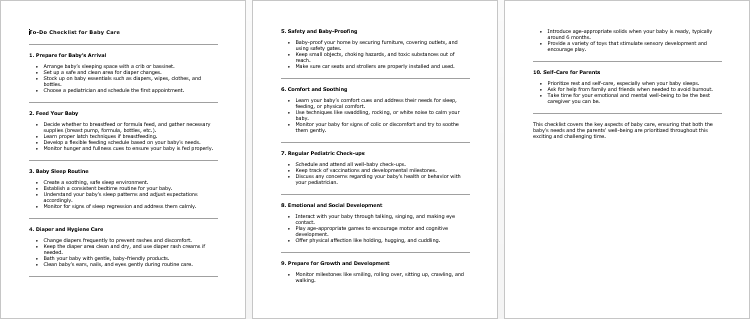
Baby Care – FAQs

Baby Care – Salespage Content

Package Details:
Word Count: 27 363 Words
Number of Pages: 96
Baby Care – Bonus Content
Checklist
Word Count: 433 words
FAQs
Word Count: 1161 words
Salespage Content
Word Count: 853 words
Total Word Count: 29 810 Words
Your PLR License Terms
PERMISSIONS: What Can You Do With These Materials?
Sell the content basically as it is (with some minor tweaks to make it “yours”).
If you are going to claim copyright to anything created with this content, then you must substantially change at 75% of the content to distinguish yourself from other licensees.
Break up the content into small portions to sell as individual reports for $10-$20 each.
Bundle the content with other existing content to create larger products for $47-$97 each.
Setup your own membership site with the content and generate monthly residual payments!
Take the content and convert it into a multiple-week “eclass” that you charge $297-$497 to access!
Use the content to create a “physical” product that you sell for premium prices!
Convert it to audios, videos, membership site content and more.
Excerpt and / or edit portions of the content to give away for free as blog posts, reports, etc. to use as lead magnets, incentives and more!
Create your own original product from it, set it up at a site and “flip” the site for megabucks!
RESTRICTIONS: What Can’t You Do With These Materials?
To protect the value of these products, you may not pass on the rights to your customers. This means that your customers may not have PLR rights or reprint / resell rights passed on to them.
You may not pass on any kind of licensing (PLR, reprint / resell, etc.) to ANY offer created from ANY PORTION OF this content that would allow additional people to sell or give away any portion of the content contained in this package.
You may not offer 100% commission to affiliates selling your version / copy of this product. The maximum affiliate commission you may pay out for offers created that include parts of this content is 75%.
You are not permitted to give the complete materials away in their current state for free – they must be sold. They must be excerpted and / or edited to be given away, unless otherwise noted. Example: You ARE permitted to excerpt portions of content for blog posts, lead magnets, etc.
You may not add this content to any part of an existing customer order that would not require them to make an additional purchase. (IE You cannot add it to a package, membership site, etc. that customers have ALREADY paid for.)
Deprecated: Function post_permalink is deprecated since version 4.4.0! Use get_permalink() instead. in /home/buyqualityplr/public_html/wp-includes/functions.php on line 6121
Share Now!

